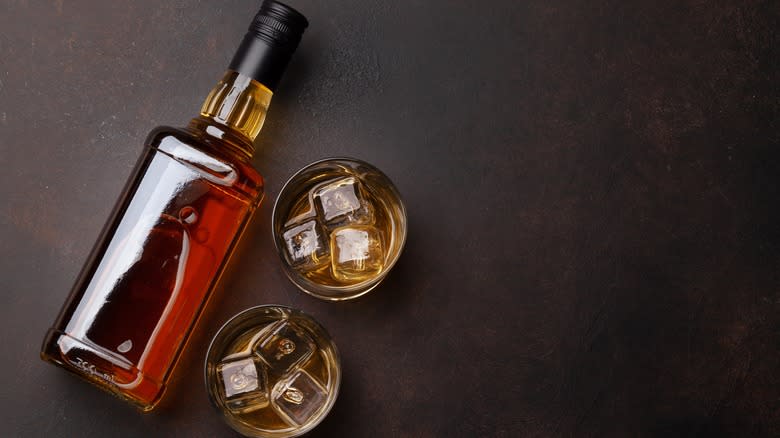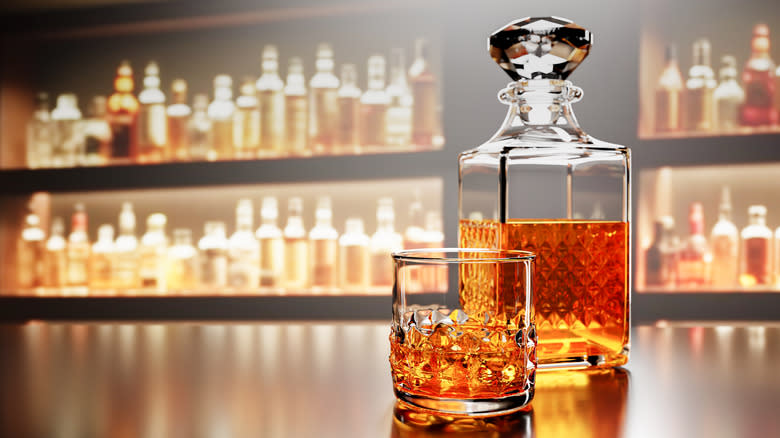The Key Difference Between High-Proof And Low-Proof Bourbon, According To An Expert

If you're not a liquor expert, you may not know the difference between bourbon and whiskey — as long as it tastes good, you're golden. If there's anything you do need to know, however, it's the distinction between high-proof and low-proof bourbon and how it impacts taste. We sat down with a bourbon expert to enlighten us on the key differences between the two.
On the surface, bourbon is strong and sweet with notes of woodsy vanilla and caramel popping through. As the liquor settles, you'll catch other flavors, like honey, oak, or chocolate. According to executive bourbon steward Chris Blatner, your perception depends on whether the bourbon is low or high-proof. "The general differences you will see in flavor profile and complexity between high-proof and low-proof Bourbon generally is an overall intensity of aroma and flavors. Whiskey at a higher proof point has had less water added to it, resulting in a higher concentration of aromas and flavors," Blatner explains.
High-proof bourbons have a richer taste, which is beneficial if you're keen on getting specific flavors from your bourbon. Blatner thinks low-proof bourbons have their own perks too. "However, adding a few drops of water or 'proofing down' your high-ABV whiskey can be beneficial in drawing out flavors that couldn't be discerned at the higher alcohol point," he states. For Blatner, this gives low-proof a wider array of notes. "Essentially, the addition of water may help your whiskey to 'bloom' and display additional aromas and flavors."
Read more: The 27 Best Bourbon Brands, Ranked
When To Use High Or Low-Proof Bourbon

Since the two aren't created equally, one may shine in areas where the other falls short. To get a clear idea of what it really tastes like, Blatner recommends drinking both of them straight. He told us, "I generally drink my whiskey neat, without the addition of ice or water. To me, the experience of drinking the whiskey as it was bottled by the producer is the purest experience."
For mixed drinks, however, he thinks high-proof bourbons are the way to go. When adding extra flavors to a summertime peach whiskey smash or classic French 75, letting the main notes shine through will enhance the taste. "I think a higher-proof Bourbon works better in cocktails," states Blatner. "The higher-proof typically means more concentrated flavors that can stand up to the modifiers it is being mixed with. I think Bourbon cocktails should start with a whiskey no lower than 100 proof and could go as high as 120 proof depending on the cocktail."
With simple desserts, a low-proof bourbon should do the trick. Something milder, like a classic pound cake or white chocolate blondies, could benefit from the variety of flavors that a low-proof bourbon provides.
Read the original article on Tasting Table.

